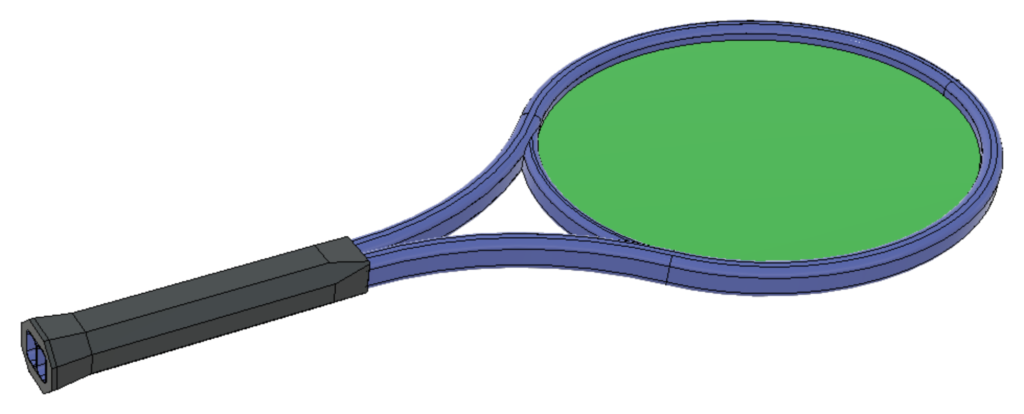A customer with an SW1 recently asked if it matters whether the racket is oriented with the head perfectly vertical, for swingweight, or perfectly horizontal, for spinweight measurements. I suspected that the result wouldn’t be very sensitive, but I wanted to quantify it.
I modeled a racket in CAD and adjusted the material densities to get a string bed of 17 grams and overall mass properties close to a typical tennis racket:
- Mass: 333.5 grams
- Balance: 33.2 cm
- Swingweight: 306.8 kg·cm²
- Twistweight: 13.6 kg·cm²

Then, I twisted it in 1° increments and output the moment of inertia about the swingweight axis:
| Twist (°) | Swingweight (kg·cm²) | Difference (kg·cm²) |
|---|---|---|
| 0° | 306.82 | – |
| 1° | 306.82 | +0.00 |
| 2° | 306.83 | +0.01 |
| 3° | 306.85 | +0.03 |
| 4° | 306.88 | +0.06 |
| 5° | 306.92 | +0.10 |
| 6° | 306.96 | +0.14 |
| 7° | 307.01 | +0.19 |
| 8° | 307.07 | +0.25 |
| 9° | 307.14 | +0.32 |
| 10° | 307.21 | +0.39 |
From the data, it seems unnecessary to be extremely accurate with racket orientation for typical swingweight measurements. At 5° of twist, which is easy to see, the swingweight result is only off 0.1 kg·cm². However, if measuring swingweight and spinweight to determine twistweight from the difference, orientation accuracy is more important. An error of 0.1 kg·cm² is more significant relative to the magnitude of twistweight.
These results should be valid for any swingweight measurement method.
If you have any questions about the SW1 or racquet measurement, leave a comment below.


Is Twist weight really equal to Spin weight less Swing weight?
Good question. I started to look into it, and I think I’ll create another post to address it.
See this post: http://briffidi.com/2022/01/29/racket-twistweight-from-spinweight-and-swingweight/
Thanks for the answer!
I find this stuff fascinating! Eager to see your twist weight device